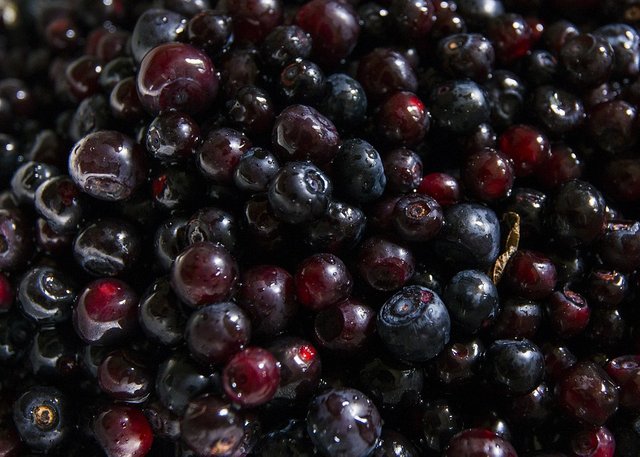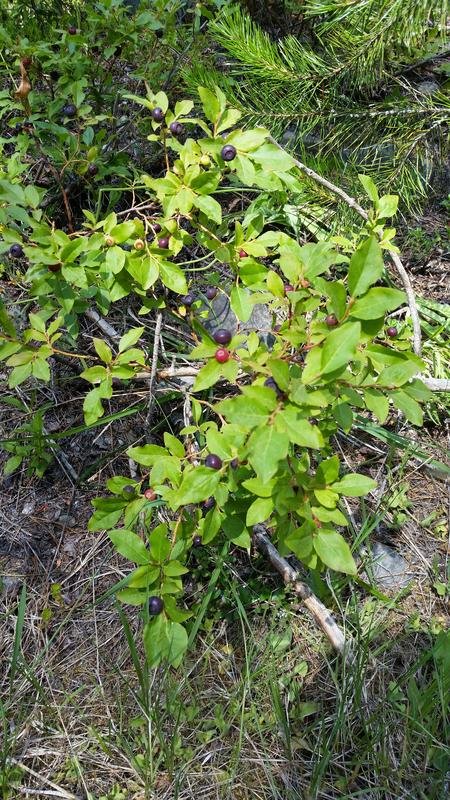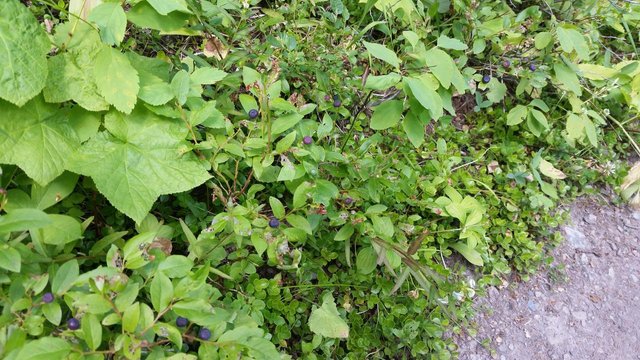
Huckleberries
The huckleberry is a small round fruit that grows in the Northwest of North America, particulary in the coastal and mountain regions. Berries grow on plants ranging from 1-4 feet tall at elevations between 2500 feet to above 7000 feet. The season for huckleberries starts in mid Summer and goes on throughout the early Fall, beginning at the lower elevations and ending at the highest. Huckleberries tend to grow in partially cleared out forest areas with sufficient sunlight and water, often along roads. The unripened berries change from green to red to blue when they are ready to pick. This summer I was fortunate enough to collect the berries in Montana and Idaho and they are undoubtedly delightful.

Health Benefits
Of all the wild fruits found in North America, the Huckleberry has the second highest antioxidant profile (first is Lingonberry). Many articles have been written about the extensive health benefits of huckleberries, including such properties as anti-aging, anti-cancer, blood sugar regulation, tolerance to infection, benefit to heart health, etc. After a few small harvests I quickly realized how potent the berries were. A handful of berries in the morning provides plenty of energy for a long hike or morning of physical labor. The berries left me feeling rejuvenated and happy, besides the delicious tart taste that is incomparable to anything I’ve experienced before (besides perhaps Sour Patch Kids).
Competition/Harvest
Though vastly beneficial to humans, huckleberries also have the peculiar tendency to grow in Bear territory. Over my travels I heard more than a couple stories of Huckleberry pickers being accosted by defensive bears looking to protect their food supply. As such, it is important when looking for the berries to be watchful and alert for signs such as bear scat, claw prints, pulverized logs, and deer carcasses. Picking by the road is often the safest move as many bears prefer to stay away from human activity. Unfortunately, human encroachment on bear forage and habitat can have a detrimental impact on the local ecosystem, particularly with commercial picking and over-harvest. Fortunately, many huckleberries are accessible by roads and hiking trails (like the one below at Glacier National Park).

Fun Concoctions
Many preparations can be made with the wild foraged huckleberries including jams, juices, shakes, crisps, kombuchas, and more. Through my travels I was able to try out various forms of prepared huckleberry and if you get the chance I highly suggest trying out a huckleberry shake.
Huckleberry Shake:
1 quart wild huckleberries
1/3 gallon favorite ice cream
10-15oz greek yogurt
Mixing together the white ice cream and blue huckleberries I would have never guessed the resulting shake would be a vibrant pink color. The shake was so tasty and energizing I decided to make another one the next week. The deliciousness of nature’s wild foods is astounding when compared to the domesticated options we have in stores. I highly recommend trying out huckleberries for yourself if you ever find yourself near the Pacific NW.
Huckleberries are so delicious . I never had them until last summer , well worth the wait . Thanks for posting upvoted .
Downvoting a post can decrease pending rewards and make it less visible. Common reasons:
Submit